This is a packet tour of Beijing, Shanghai, and Huangshan. Huangshan is a city in Anhui Province, with not only a mountain view of Mount Huangshan but also a cultural landscape like Hongcun Village and Xidi Village. With the cloud under your feet and heaven above your head after you climb up the Mount Huangshan, the “Most Wonderful Mountain” in the World. Go back in time when you visit an ancient architectural complex in Hongcun Village, which has a history of more than 870 years. All of these make Huangshan one of the best China cities to visit. The Huangshan excursion follows a Shanghai tour. Shanghai is one of the most developed cities in China, where you will have an intuitive perception of modern China. This tour will end in Beijing. It’s no doubt that Beijing is the best China place to visit for the China culture lovers. You will be surprised as Beijing has more than the Great Wall and the Forbidden City. You could enjoy a boat tour in the Summer Palace like the emperors did hundreds of years ago. You may also taste the Peking Roast Duck, which is the special supply for the imperial family in ancient China. This packet tour will be the best China tour itinerary for those who would like to see both culture and nature of China. Better to act than to be impressed!

On arrival in Shanghai, your Shanghai local tour guide and driver will be ready to pick you up and transfer you to the hotel. At the hotel, your guide will help you with the check-in. Your guide will leave after you check your room. If there is any problem with the hotel room, please let the guide know, he or she would help you to change a room if available.
Free time suggestion: Go to Hengshan Road Bar Street if you are curious about Shanghai local young people’s nightlife. Hengshan Road Bar Street is located in the Former French Concession area, and the architecture of the colonial period still remains.
After breakfast at the hotel, your guide will take you to visit Yu Garden(closed each Monday). Located in the center of Shanghai city, Yu Garden is a classical garden in Southern China. It was built in the Ming Dynasty with a history of more than 400 years and an area of more than 20,000 square meters. The Chinese character “Yu” has the meaning of happy, peaceful, and leisurely. So we can see the reason to build the garden is to have a happy life. Now, Yu Garden has been announced as one of the National Key Cultural Relics Protection Units. After enjoying the garden view, you will have some time in the nearby bazaar area, where you can try some local snacks and buy some souvenirs.
Then you will see the Bund. There stand 52 classical buildings. Most of the buildings on the Bund have been rebuilt three or more times. Architects from various countries put their own designs on different buildings here, making the 1500-meter Bund a concentration of buildings from different periods, countries and styles. When the colonists set foot in the land of Shanghai 150 years ago, they took a fancy to this riverbank of the Huangpu River. After more than a hundred years of construction, this footpath is full of tall buildings and becomes an economic center in Shanghai. Across the river from the Bund, Lujiazui Financial Center in Pudong District is home to the iconic Oriental Pearl TV Tower, Jinmao Tower, Shanghai Tower, and Shanghai World Financial Center. Then you will walk to Nanjing Road. Nanjing Road Pedestrian Street, with a road width of 18-28 meters and a total length of more than 1,000 meters, attracts more than ten thousand of visitors every day. During the development of Nanjing Road for more than 100 years, various styles of buildings have been created, which also make the street different. Here you can see the earliest department stores in China, as well as taste the most authentic Shanghai traditional food. The steamed dumplings and drunken food are worth a taste.
After lunch at a nearby restaurant, you will go up to the Shanghai Tower, with a total building height of 632 meters, and have a bird view of Shanghai. Shanghai Tower is located in the core area of Lujiazui Financial Center in Shanghai. It is a super high-rise building integrating the functions of business, office, hotel, commerce, entertainment and sightseeing. Shanghai Tower is the tallest building in China and the second tallest building in the world among the completed projects. Lots of activities have been held here. For example, in 2017, the first Shanghai Tower International Vertical Marathon officially started here. It makes the Shanghai Tower become a top venue for vertical marathon runners. There are119 floors and 3398 steps in the course of the race, with a climbing height of 552 meters for runners.
In the late afternoon, you will have a leisurely time in Xintiandi Area. Xintiandi is an urban attraction with the historical and cultural style of Shanghai. In Xintiandi Area , you can appreciate the Shikumen buildings. Shikumen buildings were built in the late Qing Dynasty by the real estate dealers in the Former French Concession. These buildings were sold to the merchants and officials who escaped from the war. Here, you can enjoy not only the ancient and modern architecture but also a cozy afternoon tea.
Optional Activities:
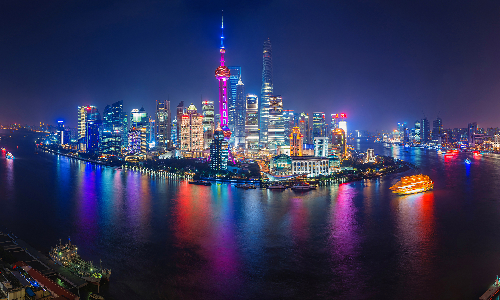
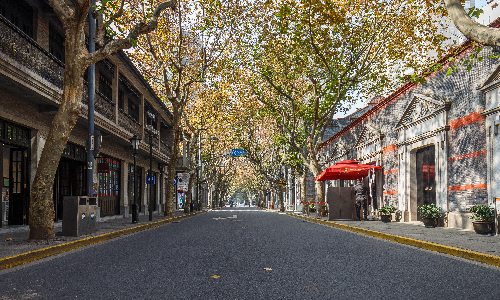
This morning, you will drive for about 1 hour (50KM) to visit Zhujiajiao Water Town, which is a classical ancient town of Southern China. In 1958, a large number of Neolithic relics were accidentally found at the bottom of the Dianshan Lake in Zhujiajiao. They were proved to be cultural relics of the Majiabang Culture, Songze Culture, Liangzhu Culture and the Western Zhou to Spring and Autumn and the Warring States Periods. In 1959, a large number of stone knives, stone plows, stone spinning wheels and stamped pottery pieces were fished out of Dianshan Lake. These relics from the Neolithic to Warring States Periods can prove that the ancestors of Zhujiajiao worked and lived here from thousands of years ago. The existing buildings are from Ming and Qing Dynasties. During your stroll in the town, you will pass through the Fangsheng Bridge. Fangsheng Bridge, where ancient people freed captive animals, is the biggest Five-hole Stone Bridge in Southern China. You can also buy some fishes by the side of the bridge, and free them to the lake.
Then you will go back to Shanghai downtown and visit Jade Buddha Temple. With a history of more than 130 years, Jade Buddha Temple has been famous at home and abroad for a long time. After the Xinhai Revolution(1911-1912), the temple was destroyed during the war and only the Jade Buddha statues survived. You could observe the believers who are worshiping here, and you will find something interesting. Most of them are holding incenses with the left hand at the top and the right hand at the bottom. Because most people are right-handers, it means they kill livestock with the right hands. We all know that Buddha does not kill. To avoid disrespecting the Buddha, people put their left hands on top.
At the end of the day, you will get back to the hotel.

 Huangshan
Huangshan Today, you will take the estimated high-speed train G7315 14:04/17:09 to Huangshan. After arrival in Huangshan, you will be transferred to the hotel and check in.
Your guide will pick you up from your hotel for a one-day Mount Huangshan tour. It needs to drive for about 1 hour (60KM) to get there.
Mount Huangshan, also called Yellow Mountain, is located in the south of Anhui Province, Huangshan City, about 40 kilometers long from north to south, about 30 kilometers wide from east to west, with a total area of about 1200 square kilometers. To the Qin Dynasty, it was also known as "Yī Mountain". So, why was it later changed to "Yellow Mountain"? Legends said that the Yellow Emperor used to refine elixirs here. There are seventy-two steep peaks, and some of them are difficult to go up even for monkeys. So Mount Huangshan is also known as the “Most Wonderful Mountain” in the world. In addition to trees and peaks, there are also hot springs and temples on the mountain.
There are many specialties in Huangshan, such as Huangshan mushrooms, Huizhou chrysanthemum, Huizhou sorbet, local teas, etc. Among them, Huangshan Mao Feng Tea, Taiping Houkui Tea and Dinggu Dafang Tea are among the top ten most famous teas in China; Huizhou chrysanthemum is a precious herb that can be used as a tea or medicine, and has the effect of nourishing the liver and eyes.
After a day of nature-view tour, you will go back to your hote.

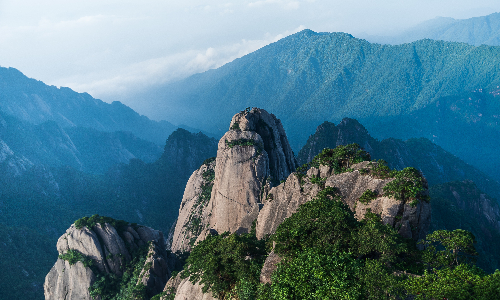
 Beijing
Beijing Today, you will drive for about 70 minutes (75KM) to go to Yi County in Huangshan City to have a cultural tour.
Yi County is one of the birthplaces of "Hui merchants" and "Hui culture", and is also a provincial historical and cultural place in Anhui Province. There are a large number of houses, ancestral halls, pagodas, gardens of the Ming and Qing Dynasties. Xidi Village and Hongcun Village of Yi County are also known as "the countryside in the painting", which were selected for the World Cultural Heritage List in 2000. You will go to visit Hongcun Village first. Hongcun Village is a traditional Chinese village located at the southwest foot of Mount Huangshan. The ancient architecture of Hongcun is Hui-style architecture with powdered walls and green tiles. The overall outline of Hongcun Village is unified with the natural scenery of topography, landform and landscape. The plan of Hongcun is in the shape of a bull, with a mountain being the head of the bull, the ancient trees at the entrance of the village being the horns of the bull, the Ming and Qing Dynasties buildings in the village being the body of the bull, and the four bridges on the stream in the west of the village being the legs of the bull. Then you will drive to Xidi. Xidi Village, alias Xixi, Xichuan, is known as the “interface between the ancient and modern history of China”, the museum of ancient houses of the Ming and Qing Dynasties, and the artistic treasure house of ancient residential architecture. In the Northern Song Dynasty, Hu Shiliang(grandson of the last prince of the Tang Dynasty) passed by Xidi. He found that Xidi was a god-given place in Fengshui, so he moved here with his whole family. So most of the people who live here are surnamed, Hu.
Tonight, you will take the estimated flight CA1552 21:15/23:25 to Beijing. Upon your arrival, your Beijing local guide will be waiting for you at the airport. Then you will go to the hotel and overnight.
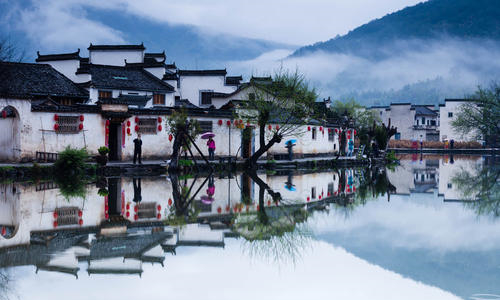
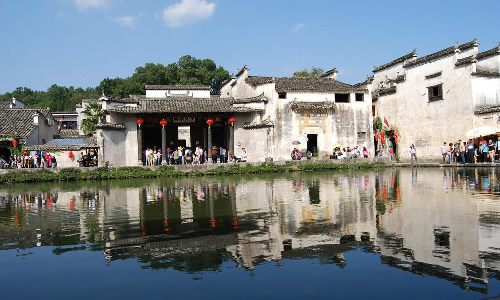
After breakfast at the hotel, you will start your Beijing tour with your local guide. Today you will visit Tian’anmen Square. Tian'anmen Square is situated on East Chang'an Street in the Dongcheng District of Beijing. With an area of 440,000 square meters, it is the largest city center square in the world. Tian’anmen Square can accommodate 1 million people for grand gatherings at same time. Tian’anmen Gate in the square used to be the main gate of the Forbidden City for the imperial families in the Ming and Qing Dynasties. So normal people couldn’t go there until 1925. Nowadays, in Tian’anmen Square, there is national flag-raising ceremony every day. The schedule of the flag-raising ceremony is according to the sunrise time. There are lots of patriotic people who come to watch the flag-rising ceremony every day in the early morning.
Then you will walk to the Forbidden City. In 1925, the Forbidden City (closed each Monday) was opened as a museum, so it is also known as the Palace Museum. The construction of the Forbidden City in Beijing began in the fourth year of the Ming Emperor Yongle (1406), and was completed in the 18th year of Yongle (1420). It became the imperial palace of 24 emperors of the Ming and Qing Dynasties. The Forbidden City was listed as one of the first batch of national key cultural relics protection units in 1961 and listed as a World Heritage Site in 1987. During the sightseeing in the Forbidden City, you will see a few huge water tanks in front of the doors of each hall and palace. The water tanks were prepared to put out the fire at any time. These tanks are iron and copper, each weighing more than a thousand kilograms. On the surface of the water tank, there are many traces of being cut by knives, which were cut by the soldiers during the invasion by the Eight-Power Allied Forces. After enjoying the vivid history of the Ming and Qing Dynasties, you will go to have lunch.
After lunch, you will continue to explore the Temple of Heaven. The Temple of Heaven is the world's largest altar complex. The main building of the Temple of Heaven is the Hall of Prayer for Good Harvests, where the emperors of the Ming and Qing Dynasties prayed for the good harvest in springs. Surrounding the buildings, here is a park. There are many locals who do exercises and social contact in the park every day. During walking around the park, you may see a 500-year-old cypress tree named Nine Dragon Cypress. Legend has it that the Emperor Qianlong of the Qing Dynasty once came to the Temple of Heaven to make a sacrifice. When he finished inspecting the preparations for the ceremony and was resting, he suddenly heard a strange sound. So the Qianlong Emperor looked around and saw nine snakes under the fence, which burrowed into the mud at once. Qianlong Emperor ordered people to catch snakes. Then, a tree outside the fence came into view. The trunk surface of this tree was covered with grooves like nine dragons soaring, so it was named Nine Dragons Cypress. In 2018, this tree was selected as one of the Top Ten Ancient Trees in Beijing.
Then we will continue the tour and visit the Summer Palace. The Summer Palace, formerly known as the Qingyi Garden, was built by Emperor Qianlong to honor his mother. In its heyday, the Summer Palace was magnificent, covering an area of 2.97 square kilometers. It consisted mainly of two parts, Wanshou Mountain and Kunming Lake. The water surface accounted for three-quarters in the Summer Palace. During the late Qing Dynasty, the Summer Palace was the most important center of politics for the supreme ruler outside the Forbidden City. There is a tomb of an imperial concubine of the Ming Dynasty on the Wanshou Mountain. Legend has it that when Emperor Qianlong was building the Summer Palace, he wanted to remove the tomb. When people dug into the door of the tomb, they saw eight words carved on the door, "You don't move me, I don't touch you", which startled everyone at that time. Qianlong was also scared after hearing that. After careful consideration, he ordered to get the tomb repaired and built a temple on it. The temple is for calming the resentment of this imperial concubine. This temple is now the Buddha Incense Pavilion in Wanshou Mountain.
Night Activities:
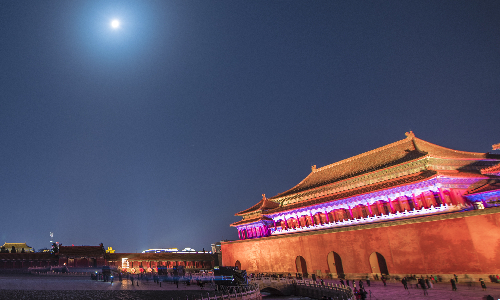
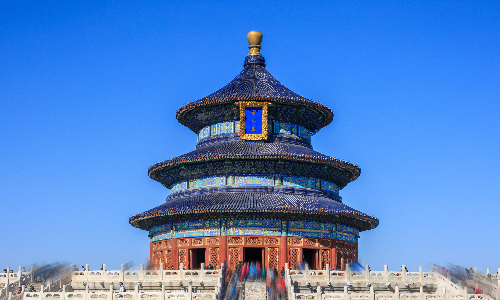
Today your guide will first take you to visit the Sacred Way. It needs to drive for about 60 minutes(45KM). The Sacred Way was built in the early years of the Zhengtong Emperor in the Ming Dynasty and completed in the 19th year of the Jiajing Emperor(1540). The stone pagoda is the first building on Sacred Way, and is the earliest wooden-structure stone pagoda built in the highest-ranking. The pagoda was a merit pagoda built by Emperor Zhengtong of the Ming Dynasty to showcase the great achievements of his ancestors. Then you will visit the Chang Tomb of the Ming Tombs. It is the joint tomb of Emperor Zhu Di and Empress Xu in the Ming Dynasty. Chang Tomb is the best in Fengshui among the thirteen tombs. It is also the largest, earliest, and the best-preserved tomb among Ming Tombs. After 1949, the founding of the People’s Republic of China, Chairman Mao, Queen Elizabeth II and her husband Prince Philip, Duke of Edinburgh, Prime Minister of Sweden Göran Persson, and President of Germany Romain Pohlsson used to visit Chang Tomb, and highly appreciated it. Luo Zhewen, a famous expert in ancient architecture, commented, "The architectural value of the Ming Tombs is extremely high, especially the Nanmu Hall of the Chang Tomb whose stone carvings are superb. The Ming Tombs are a physical history of Ming Dynasty architecture, whether in terms of architectural form, or architectural structure, or architectural art." Chang Tomb was announced as World Cultural Heritage in 2003.
And then you will go climbing the Great Wall. According to the latest measurements, the Great Wall is 21,196.18 kilometers long, passing through plains, mountains, deserts and plateaus, and spanning 15 provinces, regions and cities of China. In 1987, the Great Wall was announced as the World Cultural Heritage. The section you will visit is Badaling. The Badaling Great Wall was built during the Spring and Autumn Period(770BC-476BC) and the Warring States Period(475BC-221BC) to defend against the encroachment of northerners. The remnants of the wall and piers can still be seen today. Badaling is the witness of many important events in history. The Great Wall in the Badaling area was built in the Ming Dynasty and is one of the best-preserved sections of the Great Wall. Here you can climb up the Great Wall as well as take a cable car. At the last of the day, you will go back to the hotel and have a rest.
Dinner Option: Tonight is your last night in China, so treat yourself with a Peking Roast Duck dinner. There are three ways to savor Peking Roast Duck. The first is to eat it with crispy roast duck skin dipped in white sugar. In ancient times, noblewomen did not want to eat onion and garlic when they were out, so they used white sugar instead. The second way is to eat the duck with sweet sauce and strips of green onion, and roll them together with a thin pancake. The third way is to eat it with garlic paste and sweet sauce. Roll it in a pancake and eat them together. Garlic paste can relieve the taste of grease, so lots of people prefer this way to savor the roast duck.
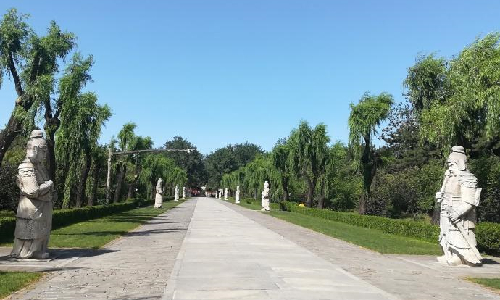
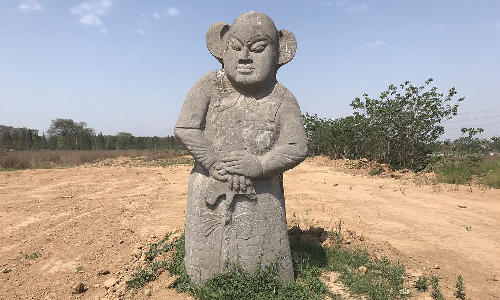
Today, you will say goodbye to China. Your guide will escort you to the airport according to the flight schedule, ensuring you are in the right terminal and gate. Then you will return to your sweet home.
Editor: Summer Hou
| City | Five Star hotel list | Four Star hotel list |
|---|---|---|
| Beijing | Sunworld Dynasty Hotel Beijing Wangfujing | Sunworld Hotel Wangfujing |
| Huangshan | Huangshan International Hotel | Huangshan International Hotel |
| Shanghai | Ocean Hotel Shanghai | Courtyard by Marriott Shanghai Central |
 |
![]() About your child or infant, please contact us for a discounted price.
About your child or infant, please contact us for a discounted price.



We started with a few days in Beijing & ended in Shanghai, from where we visited the Forbidden City and Great Wall. In between we visited Terra Cotta Warriors Museum, Panda Base, Shanghai Disneyland.

We had a wonderful holiday in China which will remain long in the memory. China is a breathtakingly beautiful country full of splendid temples and palaces, mountains and rivers, peaceful rural scenes and bustling shopping streets.
 QUICK ENQUIRY
QUICK ENQUIRY